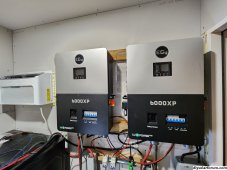Zapper77
Renaissance Man
- Joined
- Jul 23, 2022
- Messages
- 2,342
I've played around with the 18Kpv using the 6000xp’s as the grid with on grid enabled. The 6000xps handle the surge loads on and off.Can the 18kpv grid support the 6000xp stack for a total of 24kW-AC?



